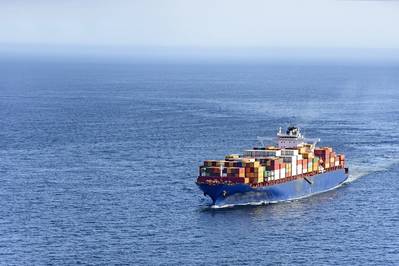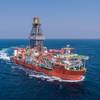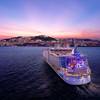Technology Enhances Crew Well-being -Report
A new report published by satellite communications provider Inmarsat examines the ways technology can benefit crew safety, health and wellbeing at sea, at a moment when COVID-19 has exposed the welfare of seafarers to global scrutiny.
The report, "Welfare 2.0: How can the next generation of technology enable better crew safety, health and wellbeing at sea?", has been prepared by consultancy Thetius and follows an earlier "Trade 2.0" report focusing on the impact new technologies and start-ups can have on efficiency in vessel management.
"When we first discussed this report last year with the author and the welfare organizations and charities we work closely with, none of us could have foreseen the impact that COVID-19 would have on the world, shipping, seafarers and their families," says Ronald Spithout, President, Inmarsat Maritime. "However, even then, we all felt that safety and crew welfare was being left behind in the technology stakes and much more needed to be done to look at how it could help improve the lives of seafarers."
The new report explores the underlying factors affecting crew safety, welfare and learning, and highlights those companies working to address the pain points. It shows that, while the maritime industry prides itself that seafarer safety and welfare is its highest priority, lack of investment in the digitalized technologies benefiting worker welfare, particularly compared to investment in other sectors, undermines the narrative.
"We are at a point in time when lack of shore leave, unplanned contract extensions, fear of job loss and separation from family are weighing heavily on seafarers worldwide," Spithout says. "Technology cannot provide a 'silver bullet'. However, its role is vital in embedding policies and practices to enhance safety and wellbeing on board. Data-based tools test what does and doesn’t work for the ‘human element’ and track changes over time."
"The new report also represents the first step in Welfare 2.0," Spithout adds. "Inmarsat is already working towards the launch of a 'Crew Welfare Open Innovation Challenge' with Shell Shipping and Maritime and Thetius – which is a corporate startup collaboration program aiming to promote and nurture digital crew wellbeing solutions."
In a global workplace wellness market worth $48 billion in 2018, report author and Thetius founder and Managing Director, Nick Chubb says that investments in crew welfare start-ups pale in comparison with vessel management technology. While difficult to break-out, the $3.8 billion spent on ship management software each year, Chubb identifies that startups focusing on issues like wellbeing, welfare and safety have on average attracted only $2.25 million in investment since 2010. This compares to $9.6 million for ship performance technology start-ups.
The report strongly recommends the value that data models capturing, storing and analyzing factors contributing to seafarer health, welfare and safety can have in shipping. The author cites one key insight as an alarming disparity between cardiovascular-related deaths at sea and available information, support and tools that minimize risks and deal with emergencies. The report shows how fleet managers could look to invest in various digital seafarer monitoring and awareness tools specific to cardiovascular health.
COVID-19 may itself have made maritime stakeholders more amenable to telemedicine services. Over 200 ships have already signed up to a new COVID-19 video consultation service from Vikand, facilitated by artificial intelligence (AI) start-up FrontM and Inmarsat Fleet Connect bandwidth. Elsewhere, start-up Motion Ventures has repurposed a financial compliance tool to support secure healthcare monitoring for crews at home, on board or in transit.
The report also explores possible consequences of the coronavirus for seafarer training, with the closure of education facilities encouraging faster uptake of remote learning. Wallem, Anglo-Eastern and Star Bulk have deployed virtual training from OMS-VR to learn about dangerous activities, for example. U.K.-based Seabot XR is developing ship-specific virtual reality (VR) and augmented reality training and familiarization, accessible to seafarers via their smartphones.
Downloadable toolboxes bridging the gap between seafarers and vessel safety are also at last starting to emerge. The Scoutbase platform, for example, allows crew to offer feedback anonymously of life on board to build a picture of emerging safety issues and separately maritime startup Big Yellow Fish creates a "net safety score" and uses gaming technology to reinforce desirable behaviors.
"Technology is not the only answer, but its development is vital if the industry is going to start to eliminate the issues we currently face with crew wellbeing," Spithout says. "It is imperative that all stakeholders now come together to create and work on common platforms to collect data, anonymize it, share it and use it to identify wider welfare trends."











